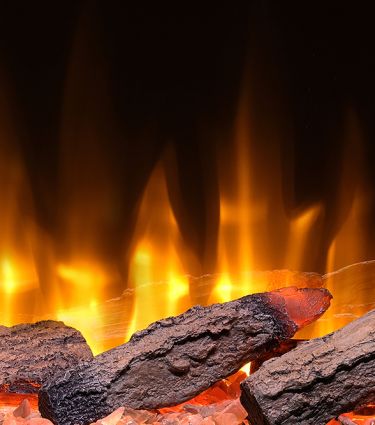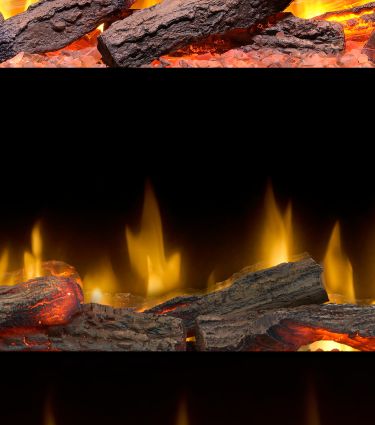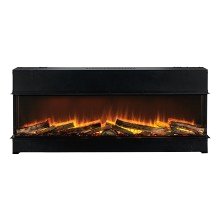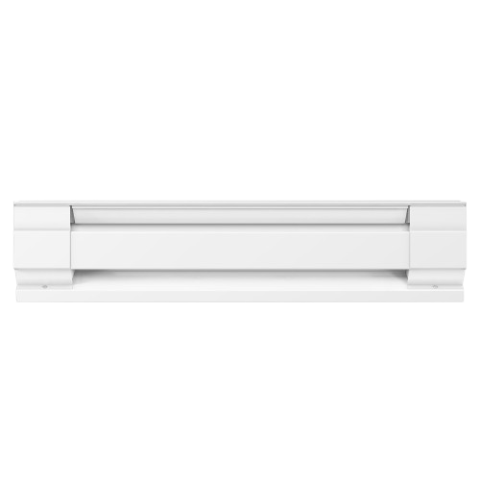

FAQ and Documentation
Product Documentation
Need technical details or service instructions? Our product documentation hub has everything you need—from installation guides to troubleshooting manuals.
General FAQ
Yes, electric fireplaces are safe for indoor use. They don’t produce flames, carbon monoxide, or harmful gases. There’s no combustion, so there’s no need for venting. Most models are cool to the touch and certified by safety agencies like UL or CSA, making them safe for homes with kids and pets.
No, electric fireplaces don’t need a chimney, flue, or vent. They don’t burn fuel or produce smoke, so there’s nothing to exhaust. This makes them easy to install in any room with a standard outlet, including apartments, condos, and basements.
Most electric fireplaces can heat rooms up to 400 square feet. Models with infrared heaters may cover larger areas. They’re designed for zone heating, so they’re ideal for bedrooms, living rooms, and offices where you want targeted warmth.
Yes, you can safely mount a TV above most electric fireplaces. They don’t emit heat upward, so electronics aren’t affected. Just follow the clearance guidelines in your unit’s manual to ensure proper spacing and airflow.
Yes, electric fireplaces are generally cheaper to operate than gas. They use electricity efficiently and don’t require fuel, venting, or annual servicing. Operating costs depend on your local power rates but are typically low for supplemental heating.
Yes, most electric fireplaces let you run the flame effect without heat. This feature is great for ambiance year-round, especially in warmer seasons when you want the look of a fire without raising the room temperature.
No permit is needed for plug-in electric fireplaces. They’re considered appliances, not permanent fixtures. If you’re installing a built-in model that requires hardwiring, check with your local building codes or consult a licensed electrician.
Yes, electric fireplace inserts are designed to fit into existing wood-burning openings. They’re easy to install, don’t need venting, and offer a clean, low-maintenance alternative to traditional wood fireplaces.
No, the glass front stays cool to the touch. Heat is released from a separate vent, usually at the top or bottom of the unit. This makes electric fireplaces safe for homes with children and pets.
Yes, most electric fireplaces are tested and certified by safety agencies like UL or CSA. Certification ensures the unit meets electrical and fire safety standards. Always check for a safety label before purchasing.
Maintenance FAQ
Electric fireplaces need very little maintenance. Occasionally dust the exterior and clean the glass with a soft cloth. Check the air intake and fan vents for buildup. There’s no need for chimney cleaning, fuel handling, or burner inspections like with gas or wood fireplaces.
Use a soft, dry cloth or a non-abrasive glass cleaner. Avoid harsh chemicals or scrubbing pads, which can scratch the surface. Make sure the unit is turned off and cool before cleaning. Regular cleaning keeps the flame effect clear and realistic.
Yes, most electric fireplaces are designed for DIY installation. Freestanding and wall-mounted models plug into standard outlets. Built-in units may require basic carpentry or electrical work. Always follow the manufacturer’s instructions and consult a professional if hardwiring is needed.
A slight odor during first use is normal. It’s caused by factory coatings burning off. The smell should fade after a few hours of operation. If it persists or smells like burning plastic, unplug the unit and contact customer support.
Inspect your electric fireplace every few months. Check the power cord, plug, and vents for dust or wear. Make sure the flame effect and heater are working properly. Routine checks help prevent minor issues and extend the life of the unit.
Yes, freestanding electric fireplaces can be moved easily. Unplug the unit and handle it carefully to avoid damaging the frame or wiring. Wall-mounted or built-in models should not be moved once installed, as they may require disassembly or professional help.
Most electric fireplaces plug into a standard 120V outlet. Avoid using extension cords or power strips. For built-in or high-wattage models, a dedicated circuit may be required. Always check your unit’s electrical specifications before installation.
Turn off and unplug the unit. Use a vacuum with a brush attachment to remove dust from vents and internal components. Wipe surfaces with a dry cloth. Never spray liquids inside the unit. Regular cleaning helps maintain performance and safety.
Most electric fireplaces don’t use air filters. If your model includes one, check the manual for cleaning or replacement instructions. Keeping vents clear is usually enough to maintain airflow and prevent overheating.
Yes, it’s safe to leave the unit plugged in. Electric fireplaces draw power only when turned on. If you won’t use it for an extended period, unplugging is a good precaution. Always turn off the unit when leaving the room.
Troubleshooting FAQ
Check if it’s plugged in and the outlet works. Make sure the power switch is on. If it still won’t start, unplug it for 5 minutes and try again. If that fails, contact Dimplex support with your model and serial number.
If the heater is on but no warm air comes out, the blower might be blocked or the heating element may be faulty. Clean the air filter and check for obstructions. If the issue continues, the unit may need servicing.
Your fireplace may shut off if it overheats or airflow is blocked. Clean the vents and filters to improve circulation. Also check the room size—small spaces can cause overheating. If the problem continues, inspect the thermostat or contact Dimplex support for help.
If the flame effect isn’t working, check the bulbs, wiring, and LED components. Some Dimplex models use transducers or light strips. Clean the unit and make sure all parts are connected properly. If needed, refer to your manual or order replacement parts.
If your Optimyst isn’t producing mist, clean the water tank, transducer, and filter pad. Make sure the transducer is fully submerged. If mist still doesn’t appear, replace the transducer and check the fan. You can also follow a video guide for step-by-step help.
Start by replacing the batteries and checking their placement. If the remote still doesn’t work, try re-syncing it using the steps in your manual. A blank screen may mean the remote is damaged and needs replacing. Contact support if syncing doesn’t fix it.
The lock symbol means the remote is in child lock mode. To unlock it, press and hold the power and flame buttons together for 5 seconds. This resets the remote and removes the lock. If it doesn’t work, check your manual or contact support.
No, Dimplex electric fireplaces should always be plugged directly into a wall outlet. Extension cords can overheat and cause safety issues. Using one may also void your warranty. Always follow the safety instructions in your manual to avoid damage or fire risk.
A soft hum is normal when the heater or fan is running. If the sound is loud or unusual, check for loose screws or debris inside the unit. Clean the fan and blower area. If the noise continues, the motor or fan may need servicing or replacement.
To reset, unplug the unit for 5 minutes, then plug it back in. Some models have a reset button near the power cord or control panel. Check your manual for exact steps. If it doesn’t reset, call Dimplex tech support.
Questions? We’ve Got Answers.
Connect with us by phone or email and get the support you need, fast.


